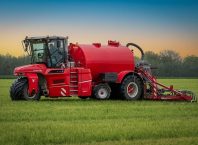If you are considering a career as an arborist or in tree servicing, you will already know that there are a number of different health and safety hazards related to working with trees. Working with trees can span a range of activities of varying hazard levels and includes everything from hedge trimming and landscaping to using ladders, ropes, and climbing equipment, and a chainsaw, often at more than30 feet above the ground.
As arborists work with their bodies, keeping fit and staying safe and healthy is not only crucial for their physical and emotional wellbeing but also for ensuring that a regular paycheck arrives every month. Taking steps to learn about tree servicing safety best practices and how to take care of your business will help you have a long and safe career in tree servicing. Keep reading to learn more about what you can do to develop top-notch health and safety best practices for your tree servicing career.
The importance of training
Proper, comprehensive training is essential for learning how to carry out tree servicing in a safe and responsible manner. Many people who work in tree servicing receive training on the job or as part of an apprenticeship program. If you are onboarding new employees or responsible for the company’s training of recruits, ensuring that your employees receive comprehensive, in-depth training is essential. Extensive training should include all of the relevant health and safety information and instruction regarding how to best service and care for trees. Knowing how to react in an emergency is also essential, so first aid training should also be given.
If you are interested in working as an arborist, you can become a certified arborist and obtain an arborist license from the International Society of Arboriculture. Alternatively, many states also have programs specifically for tree servicing training, such as The Tree Care Industry Association’s Certified Tree Care Safety Professional program.
Receiving certification through a program or obtaining a license is a longer, more involved process than training received on the job. However, if you are looking to potentially climb the career ladder in the sector, develop your skills, and boost your resume’s attractiveness, then undertaking one of the programs will be a great career choice.
Protecting yourself from liability
Although taking out insurance will not physically protect you, it will protect your business if anything does go wrong. Unforeseen hazards often feature on a job site. A branch might fall off the tree more quickly than you were expecting and hit a person or a car below, one of your employees might mishandle a tool and injure him or herself, or a local competitor might try to take you to court over advertising disputes. The difference between having insurance and not having adequate cover can mean the difference between keeping your company and going bankrupt.
A comprehensive insurance policy will ensure that you are covered for injuries and damage which could occur while working and will provide you with additional protection and support in the event that a disgruntled client sues your company. Next Insurance provides insurance policies that offer coverage that protects your tree trimming business. Their insurance plans are specifically tailored to the industry, and their insurance experts have experience advising on insurance plans and options in the sector.
Next Insurance policies are also designed to assist a busy owner of a small business who wants to minimize the time they spend doing paperwork. You can receive an insurance quote, take out insurance, and receive expert customer support, all from the user-friendly Next Insurance platform.
The tools of the trade
Learning about the tools and equipment used in tree servicing is essential to maintaining a safe workplace. The tools used in tree servicing are almost all potentially dangerous – clippers, chainsaws, blowers, and mowers all have the potential to inflict grievous bodily injuries. Every year in America, a number of people are killed by these types of power tools. To maintain safety on-site, all employees should be trained on how to use all of the tools safely and responsibly – including how to lay power cords and extension cords safely, how to power off devices completely, and how to perform maintenance on damaged tools.
Workplace training should also include education regarding tool maintenance. Dull tree servicing tools can actually pose more of a danger to work than sharp tools. Tools which are dull are more likely to cause injuries like severe cuts and even amputations, and they are more challenging to operate, which can lead to repetitive stress injuries in workers. Regular maintenance checks of the tools are just as necessary as cleaning and stowing the tools safely after each use.












